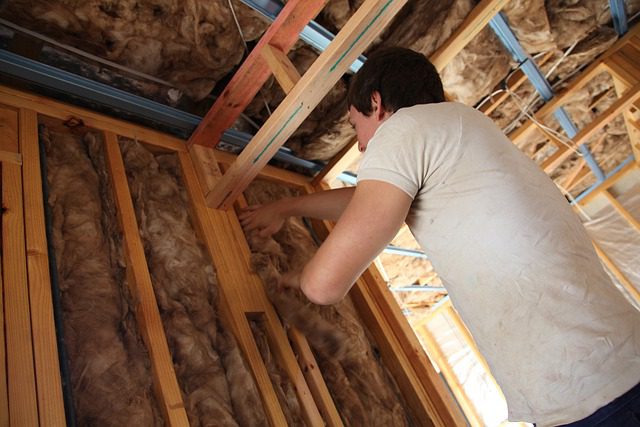High Energy Bills & Poor Comfort? You Might Need Better Insulation

Ever wonder why your cooling and heating bills seem to be higher than those of your neighbors who have homes of similar size and type? The answer may be hidden behind your walls, above your ceilings and in your attic.
Inadequate or absent insulation may be why your home so quickly loses heat in the winter and absorbs it in the summer. When a home can’t slow down the transfer of heat energy between inside and outside, its cooling and heating equipment has to work overtime to satisfy the temperature demands of your thermostat. This translates into higher heating and cooling bills, a less comfortable home, unnecessary stress on HVAC equipment, and the resulting breakdowns and premature system replacement.
Find out how upgrading home insulation can correct these issues, plus make your home more comfortable for you and your family.
Where Should You Begin?
Many HVAC experts agree that when it comes to residential insulation, the attic is the best place to start. Upgraded attic insulation will have the quickest positive effect on heating bills, plus the attic just happens to be the simplest place to insulate in most homes. In the summer, the heat gain from the hot sun beating down on the roof throughout the day in a badly insulated attic can spread to the living areas below. This forces your AC or heat pump to work longer and harder to cool the home. In the winter, an attic with insufficient insulation and poor air sealing will allow warm air and heat energy to rise from below, making it harder to heat living areas. (Effective attic ventilation is also imperative in the home, for many of the same reasons that apply to insulation.)
For a handy homeowner, insulating the crawlspace, basement and around accessible ductwork is also relatively simple, while it’s much harder to insulate behind walls and above ceilings.
Types of Insulating Materials
Fiberglass: This is the industry standard for buildings, both residential and commercial. Fiberglass insulation is sold in a variety of sizes and thickness. You can buy it in pre-cut rolls or batts, or as loose fill. Fiberglass insulation can even be sprayed into wall cavities to arrest air intrusion, though fiberglass insulation’s main utility is to impede the transfer of thermal energy (heat) rather than air. According to the U.S. Department of Energy, improving fiberglass insulation to designated standards can lower heating and cooling costs up to 30 percent in a typical home.
Cellulose: Though this common product has been used for centuries, its common modern usage began in the 1920s and took off after World War II. Composed of plant fiber or natural paper or plant fiber, cellulose provides effective resistance to moisture, fire, mold and vermin, while providing resistance to both heat and noise. Often this sort of insulation is blown into roof and wall cavities. In recent decades, for assorted reasons, including federal rule-making, cellulose and other insulating materials have replaced fiberglass in many residential applications.
Polyurethane foam: Unlike other insulation materials, this has the advantage of providing resistance to both heat transfer and airflow. Often referred to as expanding spray foam, polyurethane foam will fill gaps tightly, blocking not only airflow and heat flow, but also the intrusion of bugs, vermin and plants into the home’s perimeter. It’s often used to seal certain types of air leaks in the home’s outer perimeter and other areas.
Rigid polyurethane insulation: This can be purchased as either low-pressure foam, meant for basic applications such as weatherization and insulation repairs, or as a high-pressure product that contractors use to insulate underground pipes or surround building envelopes.
Open Cell and Closed Cell
Polyurethane spray foam insulation comes in two main types – open cell and closed cell. The closed-cell type is particularly durable and energy efficient. Because the cells in the substance are closed, moisture can’t pass through them, which provides a distinct advantage. Closed-cell foam insulating materials also provide high R-values (a measure of thermal resistance), and are effective at muffling noise. This material can even improve a building’s structural integrity.
Open-cell foam, for its part, has lighter density than closed-cell, and is cheaper to purchase. It’s superior at noise control as well, and usually is less expensive to install. Open-cell foam, however, shouldn’t be exposed to the elements, and can be a welcoming environment for mold if allowed to get wet. For this reason, a moisture barrier is recommended with open-cell polyurethane spray foam.
Clearly, some types of insulation are easier to work with than others, and different types boast different advantages and disadvantages. Similarly, it’s easier to install insulating materials in some parts of your home than others. For an effective and professional upgrade of your home’s insulation, work with an experienced, credentialed Cincinnati heating and cooling contractor rather than trying to do it all by yourself.
